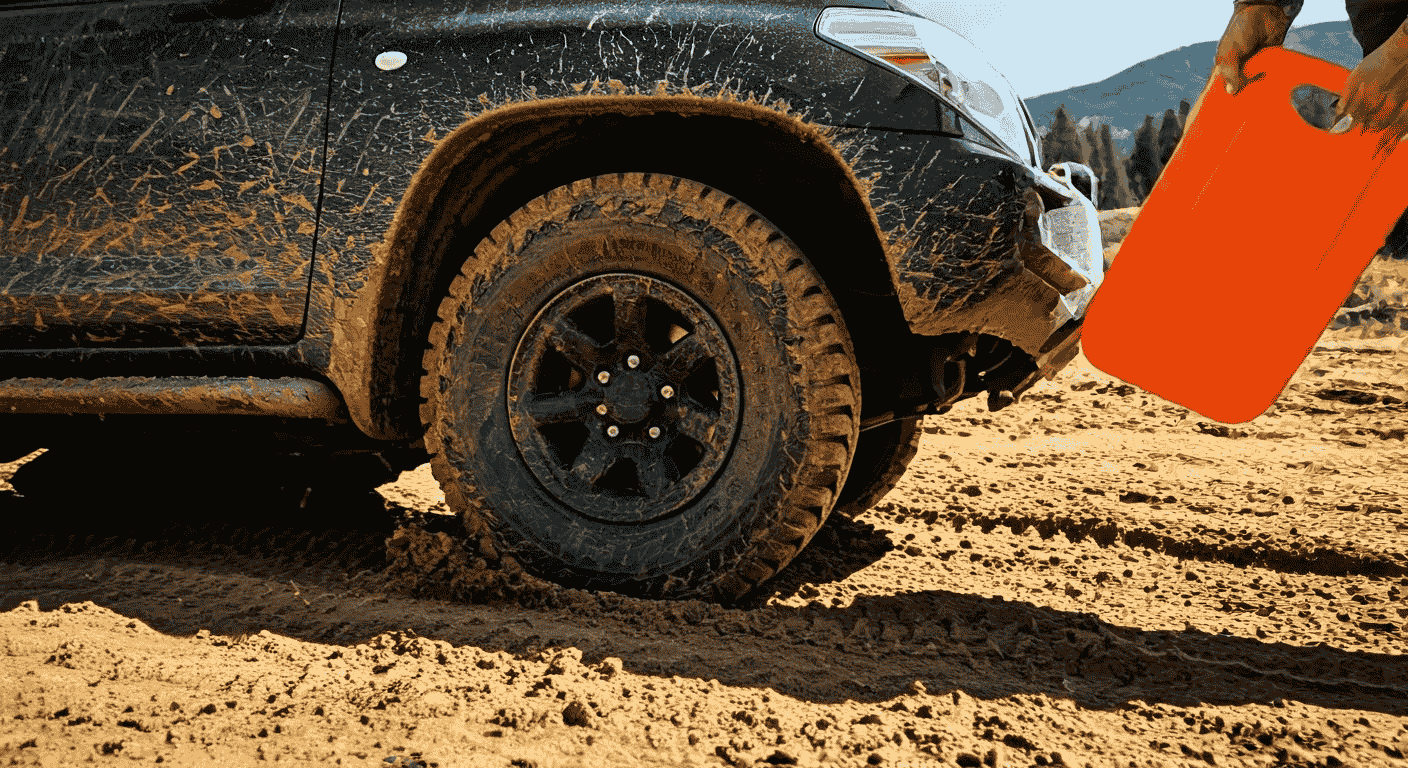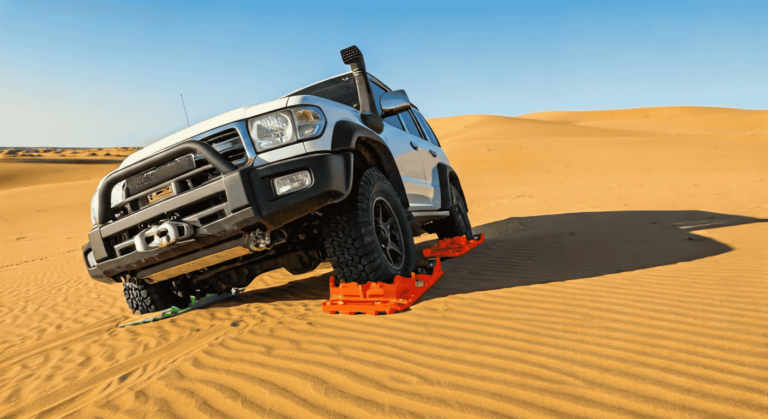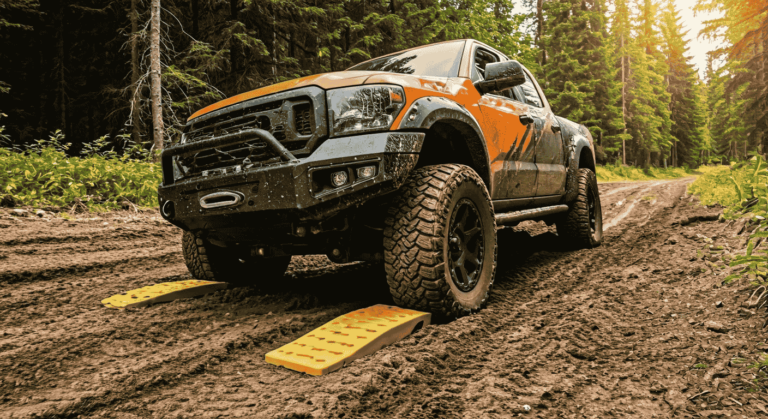Introduction
Off-roading offers an exhilarating escape into nature’s raw beauty, but the thrill comes with its own set of challenges. From sandy dunes to muddy trails and snowy passes, unpredictable terrain can easily lead to a stuck vehicle. Recovery traction boards provide a reliable, practical solution for getting back on track without external assistance. In this comprehensive guide, you’ll learn how to effectively use recovery traction boards and navigate challenging conditions with confidence.
Why Recovery Traction Boards Are Essential for Off-Road Adventures
Traction boards are an indispensable piece of equipment for any off-road enthusiast. Unlike winches or tow straps that require another vehicle, traction boards offer self-recovery, providing immediate assistance in remote areas. Their robust construction and textured surfaces offer maximum grip, making them suitable for use in mud, snow, or sand. Additionally, they double as leveling blocks or temporary bridging devices when necessary.
Common Scenarios Where Recovery Traction Boards Save the Day
- Loose Sand: Vehicles can quickly sink in soft desert sands. Traction boards create a firm path for the tires to grip and drive out.
- Deep Mud: Mud can be deceivingly sticky, especially after rainfall. Boards prevent excessive wheel spin and provide stable ground.
- Snow and Ice: Icy tracks reduce tire traction, but boards with specialized spikes or grooves offer effective grip.
- Rocky Trails: When tires lose traction on loose gravel, traction boards can serve as a stable platform.
Who Can Benefit from Using Recovery Traction Boards
- Off-Road Enthusiasts: Frequent adventurers tackling rugged trails.
- Overlanders: Travelers who rely on self-sufficiency in remote areas.
- Emergency Responders: Essential for reaching stranded vehicles.
- Everyday Drivers: Useful in snowy or muddy regions, especially for rural commuters.
Understanding Recovery Traction Boards
What Are Recovery Traction Boards?
Recovery traction boards are durable, portable devices designed to provide grip for tires in low-traction scenarios. Constructed from reinforced plastics or composite materials, they feature aggressive textures and patterns to bite into both the ground and tire surface. Some models even include integrated handles and mounting holes for convenience.
Types of Recovery Traction Boards Available
- Standard Traction Boards: Ideal for most off-road scenarios with their rugged build and general-purpose design.
- Foldable or Compact Boards: Space-saving options for smaller vehicles or those with limited cargo room.
- Heavy-Duty Boards: Designed for large SUVs, trucks, or vehicles loaded with extra gear.
- Specialized Boards: Some models offer metal-reinforced teeth for additional durability on extreme terrains.
Key Features to Look for When Choosing Traction Boards
- Material Quality: Opt for boards made from UV-stabilized, high-density polyethylene (HDPE) for longevity.
- Load Capacity: Ensure the board supports your vehicle’s weight.
- Grip Design: Consider deeper cleats or patterns for better traction.
- Portability: Compact boards with integrated handles offer easy transport.
Preparing for Recovery
Essential Tools to Carry Alongside Traction Boards
- Shovel
- Tire Deflators
- Gloves
- Recovery Straps and Shackles
Safety Precautions to Keep in Mind Before Recovery
- Wear gloves and proper footwear to prevent injury.
- Ensure all bystanders are safely distanced.
- Avoid sudden acceleration to prevent flying debris.
- Monitor surroundings for any shifting ground or unstable terrain.
Assessing the Terrain and Identifying the Best Recovery Approach
- Determine which tires are stuck.
- Assess the softness or slipperiness of the ground.
- Identify a clear path for the vehicle to follow.
- Clear excess mud, snow, or sand for board placement.
Step 1: Positioning the Vehicle
Evaluating the Situation Before Making a Move
- Put the vehicle in park and apply the parking brake.
- Step outside to inspect tire positioning.
- Avoid aggressive acceleration, which can worsen the situation.
Clearing Obstructions Around the Tires
Remove excess mud, snow, or debris using your shovel. Create a small incline in front of the tires to facilitate movement.
Using Shovels and Other Tools to Create Space
Dig channels leading to firmer ground if necessary. Flatten the path to ensure proper traction board contact.
Step 2: Placing the Recovery Traction Boards
Correct Placement for Optimal Traction
Position the boards as close as possible to the stuck tires. Align the textured side upward for maximum grip.
Ensuring Proper Contact Between the Tires and Boards
Slide the boards under the tires until secure contact is made. Ensure no large gaps exist between the tires and the boards.
Adjusting for Mud, Snow, or Sand
- For mud, slightly wiggle the board to sink it for better grip.
- In snow, clear ice from the contact points for stability.
- On sand, create a gradual ramp using the boards.
Step 3: Driving to Regain Traction
Applying Steady Throttle Pressure
Engage four-wheel drive if available. Apply gentle, consistent throttle without abrupt acceleration.
Avoiding Tire Spin and Preventing Further Damage
If tires spin, ease off the accelerator. Reposition the boards if necessary and try again.
Knowing When to Stop and Readjust
If no progress is made, stop immediately. Evaluate tire movement and readjust the boards as needed.
Step 4: Reassessing and Troubleshooting
What to Do If the First Attempt Fails
- Check the alignment of the boards and reposition them.
- Reduce tire pressure slightly for improved grip.
Adjusting Board Position for Better Traction
Adjust the angle of the boards to provide a longer traction path. Use additional boards if necessary.
Using a Second Set of Boards for Additional Support
Double-layer boards for deep mud or snow. Place additional boards behind the tires for reverse recovery if needed.
After Recovery: Cleaning and Storing Your Boards
Proper Cleaning Techniques Based on Terrain Type
- Rinse mud and sand with water.
- Use a brush for stubborn debris.
- Dry thoroughly to prevent mold or mildew.
Inspecting Boards for Damage and Wear
Check for cracks or deformations. Confirm teeth or grip surfaces remain intact.
Storing Boards Safely for Future Use
Mount boards on a roof rack or in the cargo area. Keep them secured to prevent damage during transit.
Conclusion
Recovery traction boards are a powerful and effective tool for off-road enthusiasts, providing independence and peace of mind. By following these detailed steps, you can confidently navigate tough terrain, knowing that a self-recovery solution is always within reach. Practice using your boards in controlled settings to familiarize yourself with their operation. With proper preparation and technique, you’ll be ready for whatever challenges the trail may present.




